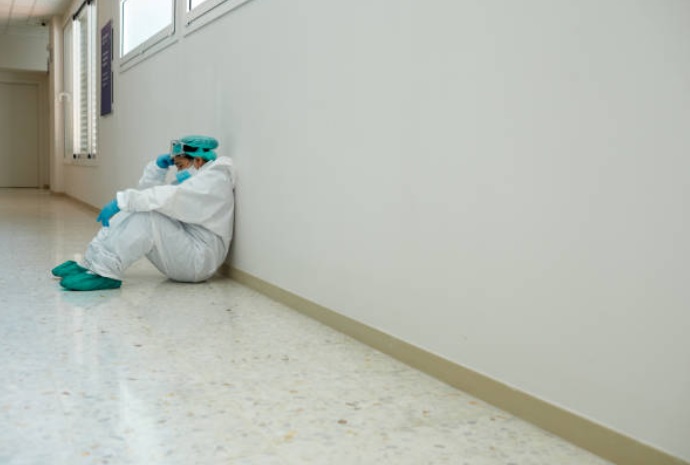Lisnevska Nataliia
Chairman of the Supervisory Board of the Foundation
25.10.2021
It is not uncommon for patients to videotape medical workers in the course of their professional duties, as well as to record audio conversations without the direct consent of the medical worker. What should be done to prevent a patient from making such video or audio recordings?
Legal regulation

It is necessary to begin with the fact that during the implementation of medical activities the accounting of personal data of persons involved in the implementation of medical activities is carried out. With it, in accordance with the Law of Ukraine “On Personal Data Protection” of June 01, 2010 No. 2297-VI, the personal accounting must ensure the confidentiality of personal data of persons involved in medical activities, and the security of these personal data with the compliance with the requirements established by the legislation of Ukraine on personal data. Also on the basis of the said law processing of personal data is possible only with the consent of the subject of personal data, except for the cases specially established by the law. According to the general rule of personal data processing, the latter is any action (operation) or a set of actions (operations) carried out with or without the use of automation means, with personal data: collection, recording, systematization, accumulation, storage, clarification (update, change), extract, use, transfer (distribution, provision, access), depersonalization, blocking, deletion, destruction of personal data. Therefore, the video recording of the reception of medical workers and the audio recording of their voices will be the processing of their personal data.
We should also not forget about the concept of biometric personal data. These include physiological data (dactyloscopic data, iris, DNA analysis, height, weight, etc.), as well as other physiological or biological characteristics of the person, including his or her image (photo and video), which allow to establish his or her identity and used by the operator to establish the subject person. It should also be noted that information that characterizes the physiological and biological characteristics of a person, on the basis of which it is possible to establish his or her identity (biometric personal data) and used by the operator to establish the identity of the personal data subject, can be processed only with written consent of the personal data subject. Therefore, it is reasonable to conclude that the video and audio recording of the work of medical workers will be the processing of their biometric personal data, which is possible only with the consent of medical workers.
You should also keep in mind the local regulations, which may be useful in these circumstances. These are the Rules of internal labor regulations. What is so special about these Rules and how can they come in handy?
The Rules of internal labor regulations are a local normative act that regulates the organization of work at an enterprise, institution, organization.
The Rules of internal labor regulations are mandatory for all employers without exception, as required by the Labor Code. According to Part 1 of Article 21 of the Labor Code of Ukraine of 10.12.1971, the employee undertakes to perform the work specified in the labor contract, subject to the internal labor regulations. Article 142 of the Labor Code establishes that the work schedule at enterprises, institutions, organizations is determined by the rules of internal labor regulations. It is in the text of the Rules that you can additionally prescribe a prohibition on video or audio recording of the reception.
What should I do if a patient or a patient’s representative makes a video or audio recording of a conversation with a doctor during the execution of his or her duties?

You must first notify the patient who is recording you that you do not consent to the processing of your biometric personal data. Then, if the recording continues, it is necessary to notify the patient that he or she is committing an administrative offense, because the processing of personal data without the written consent of the personal data subject is prohibited in the cases where such consent must be obtained in accordance with the legislation of Ukraine on personal data. It is also possible to notify (if there is a relevant thesis in the Rules of Internal Labor Regulations) that a person who violates these Rules may be forcibly removed from a health care facility (this is not an emergency, but urgent patients are unlikely to make a record. If their relatives or representatives do so, they may be removed from the health care facility). In addition, according to Article 307 of the Civil Code of Ukraine, publication and further use of images of a citizen (in particular, photographs, as well as videos or works of fine art in which he or she is depicted) are allowed only with the consent of this citizen. Such consent is not required if:
- the image use is carried out in the state, civil or other public interests;
- theimageofthecitizenisreceivedduringshootingwhichiscarriedoutintheplacesopenforfreevisiting, oratpublicevents (meetings, congresses, conferences, concerts, performances, sportscompetitionsandsimilaractions), exceptforthecaseswhensuchimageisthemainobjectofuse;
- the citizen sued for a fee.
You can also take photos and videos of officials, officials or public officials of public authorities and local governments in the performance of their official duties without consent. However, doctors do not belong to these categories of persons.
If an image of a citizen obtained or used without his consent has been distributed on the Internet, the citizen has the right to demand the removal of this image, as well as the termination or prohibition of its further distribution. Therefore, if the video is posted somewhere, for example on an Internet resource, you must:
- Send an application to the administration of the Internet resource with a request to delete your image, because it was received without your consent.
- Apply to the prosecutor’s office to initiate a criminal case against the person who posted your image on the Internet resource.If you do not know who did this, you can ask the prosecutor’s office to identify this person (for example, by submitting a relevant request to the administration of the website where the image was posted).
- If the person who posted your image without your consent is known, you can file a lawsuit to compensate for non-pecuniary damage.
Importantly! Be sure to take screenshots of the page where your image is posted and notarize them. The fact is that the administrator of the page can easily delete everything, and then prove that the image was there, it will be almost impossible. Just as it is impossible to track all copies made on the Internet. Screenshots should be attached to the application to the law enforcement agencies and attached to the statement of claim.
